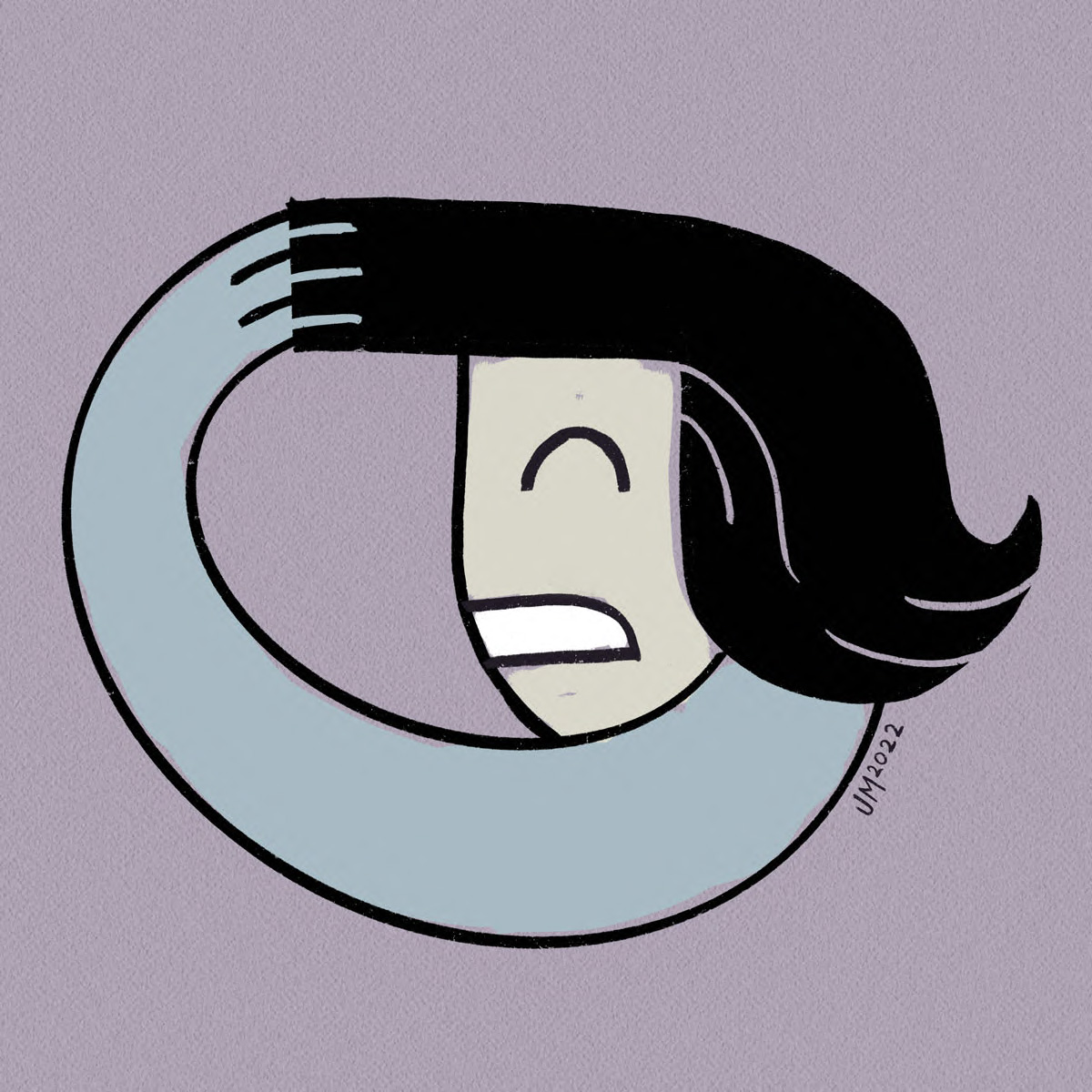Don’t despair (that’ll probably make it worse) and do this instead.
You’re sitting at your desk and find yourself pulling on your hair or picking your cuticles. You force yourself to stop for a minute because you know it’s harmful—your fingers are sore and your hairline is thinning—but the urge to do it is just. so. strong.
If you struggle with powerful impulses like these, you already know how difficult they are to manage. Fortunately, therapeutic techniques like Habit Reversal Training may help. Read on to find out what it is and how to do it.

What is Habit Reversal Training?
Habit Reversal Training is a therapy that can help people to stop body-focused repetitive behaviors like hair pulling, skin picking and nail biting. It teaches you to recognize when you’re most likely to engage in the unwanted behavior and develop alternative responses. While it may be most effective when directed by a trained therapist, you can try it at home, too.
Habit Reversal Training Steps
1. Practice Awareness Training.
Learn to recognize your behavior patterns so that you can anticipate your impulses and divert your energy to something else.
- Self-observe. Every time you bite your nails, pull your hair or pick your skin, take note of it and describe it in detail. For example, “I’m sitting at my computer and pulling the strands of hair near my left temple. I didn’t want to actually pull out my hair, but a strand just popped out.”
- Track it. If it helps, keep a journal in which you write down every time you engage in the behavior. Take note of the time of day, location, and what you’re doing and feeling.
- Identify warning signs. Your goal is to learn to recognize the earliest warning that an impulsive behavior is about to take place. These warning signs can be sensations, urges or thoughts. Do you feel tense? Does your scalp hurt? Do you need sensory stimulation? Is something else triggering you?
- Recognize where it happens. Identify all situations in which you engage in the behavior. For example, do you tend to do it while watching TV, sitting at your computer, or when you’re feeling stressed?
2. Develop a Competing Response
Find something you can do instead of your compulsive behavior. You might ball your hands into fists and hold them rigidly alongside your body. You might engage in a breathing exercise or fiddle with a fidget toy. Some people even take up knitting or other hobbies that keep their hands busy.
Find things that you can do in all of the settings in which your behavior occurs. A small, silent fidget toy may be perfect for meetings at work but a different competing response might work better when you’re watching TV at home. Experiment and find what works for you in each environment.
The idea is to train yourself to seek the competing behavior instead of the troublesome one.
3. Build Motivation
Write down a list of the negative effects that your unwanted behavior causes. Is your hair thinning? Are your fingers bleeding? Is your skin scabbing over? Have other people noticed? Does your behavior affect your ability to work, socialize or take care of daily tasks? Keep this list visible so you can look at it frequently and remind yourself why you want to stop the troublesome behavior.
What else you can do
If you struggle to stop biting your nails, picking your skin or pulling your hair, it isn’t a matter of willpower but is more likely the result of a combination of your genetics, stress, environmental factors and/or temperament. Remarkably, even animals like great apes, birds, dogs and cats engage in over-grooming or picking behaviors that appear very similar to those found in humans [1].
Clearly, these behaviors are not your fault, and you may need professional help in the form of psychotherapy or medication to manage them.
Therapy
Cognitive Behavioral Therapy (CBT) or Dialectical Behavior Therapy (DBT) can help you challenge negative self-talk, manage stress, and develop healthy coping mechanisms.
For many people, underlying anxiety contributes to behaviors like hair pulling and nail biting. Therapy can help you address and manage anxiety issues as well.
Medication
There are no FDA-approved medications that specifically target these behaviors. However, the following medications may help.
- Clomipramine may reduce hair pulling.
- Fluoxetine may reduce skin picking.
- N-Acetylcysteine is a supplement that affects levels of glutamate and may make it easier to stop hair pulling, skin picking and nail biting [2].
- SSRIs may reduce anxiety.
Next Steps
If you or someone you love struggles with body-focused repetitive behaviors like hair pulling, nail biting or skin picking that make life difficult, seek professional help before it gets worse.
Call your doctor or contact Athena Care, for mental health care in Tennessee.
One of our Care Coordinators will help you get the care you need.

Rachel Swan, MS
Editor
Rachel has a Masters of Science in Clinical Psychology from Vanderbilt University, where she spent 16 years as a Research Analyst in the Psychology and Human Development Department.


